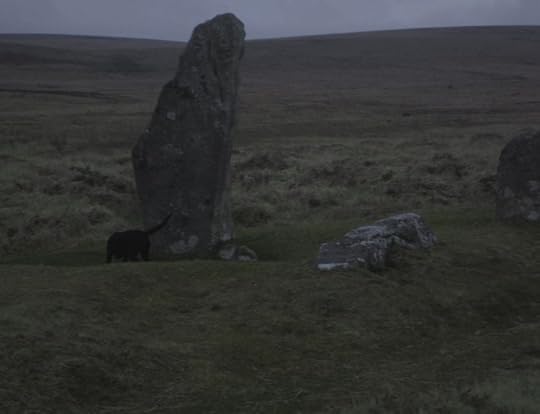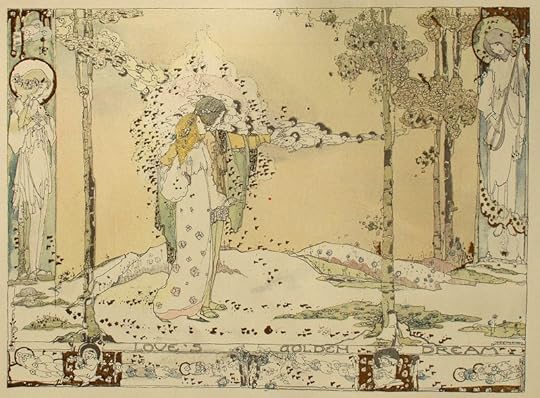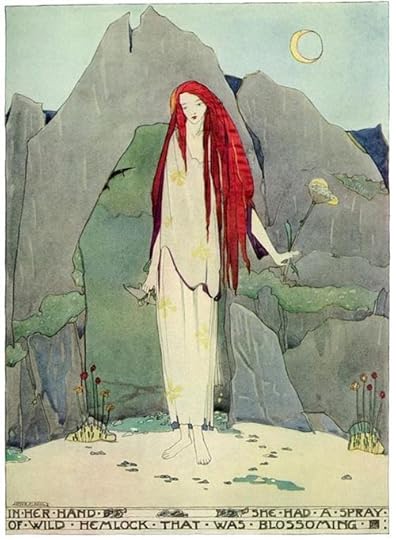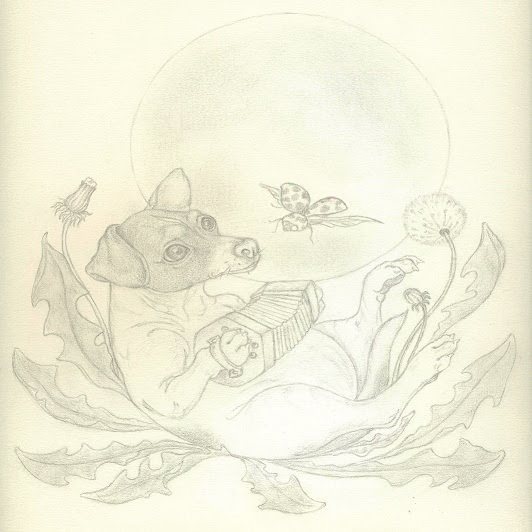Terri Windling's Blog, page 234
November 18, 2011
Friday's Recommendations:
I've been down with flu, so my reading has been limited...but I have a few recommendations for you nonetheless. (I hope to be back in the studio properly, and thus back on this blog, by Monday.)
* First up: It's the first birthday of the John Barleycorn blog, with Rex and Howard celebrating their first year as bloggers (after a very nervous start)....so stop by if you can, have a glass of champagne, and wish them well!
* Jude Hill at Spirit Cloth and Rima Staines at The Hermitage have both been inspired by autumn leaves this week...and here are two more links that tree lovers should not miss: the gorgeous "Hope Tree" light and paper installation created by 24 Studio for last year's Tokyo Designers Week, and VisionDivision's arboreal design for a student retreat at the Politecnico di Milano, Italy. (Follow the link to the VisionDivision blog, then scroll down to the October 21st post: "The Patient Gardener.") The latter two links are via Ruthie Reddon.
* Midori Snyder profiles the work of Ukranian illustrator Vladislav Erko at In the Labyrinth; Debbie Styer pays tribute to Czech artist Alphonse Mucha at Bluehour Studio; and Emma Mustiche discusses the art of the great American illustrator Howard Pyle in Salon magazine.
* Also in Salon: Jonathan Lethem discusses his new collection of essays, The Ecstasy of Influence, with Laura Miller. The title essay (published in Harper's a while back) is worth the book's cover price alone, and I'm eagerly looking forward to reading the rest.
* There's an interesting article in The New York Times discussing the new Nashville bookstore opened by Ann Patchett with Karen Hayes. Patchett, author of the brilliant Bel Canto and other novels, is one of the best writers working in America today...and it's great to see a bookstore opening at a time when so many others are closing their doors.
* Dinah Roe (the American-born, London-based academic and author of several fine books on Victorian art and literature) has a handsome new blog, Pre-Raphaelites in the City, "exploring the thriving Victorian cities which inspired the Pre-Raphaelites, and were shaped by them in turn." Promising indeed.
* Weird Fiction Review, edited by Ann & Jeff VanderMeer, continues to add good material -- including interviews with Margo Lanagan and Michael Ajvaz, essays on Alfred Kubin and Kafka, new fiction, and more.
* At Studio Morran, Swedish illustrator Camilla Engman continues to post pictures from the fabulous Morran book project, interspersed with Engman's own art and other charming things.
* More magical creations can be found on the Imagine Gallery blog, a chronicle of daily life at an art gallery in Suffolk, England.
* This week's video recommendations: "Keep Drawing," a rotoscope animation from Studio Shelter in Seoul, Korea, posted over at Colossal. And the new Telling the Bees video, in which Andy Letcher discusses how the band came together and the ideas behind the music. Wonderful.
* And now here's my favorite link of the week, which absolutely blows me away: My friend and neighbor David Wyatt discusses the creation of his latest painting, "In the Word Wood," over on his illustration blog, Posterous. Here is the painting in question:
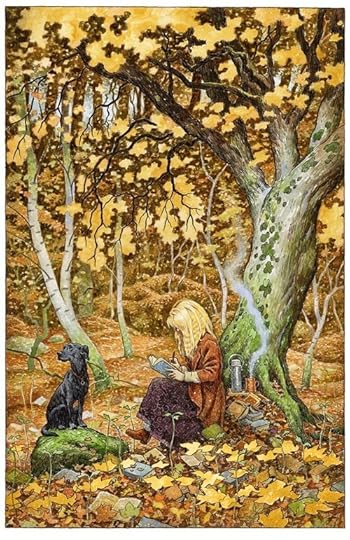 "Like 'Comfort in Quilting,'" says David, "the subject is a real person (and a real dog) going about their normal business; in this case a multi-award winning writer who likes to start the day pretty much in the fashion depicted."
"Like 'Comfort in Quilting,'" says David, "the subject is a real person (and a real dog) going about their normal business; in this case a multi-award winning writer who likes to start the day pretty much in the fashion depicted."
Tilly and I are honored, David. In fact, we're speechless....
November 14, 2011
Tilly and I are off with the fairies. We'll be ba...
November 13, 2011
Tunes for a Monday Morning
Above, the English folk-rock band Steeleye Span (with the great Maddy Prior) performs "The Bonny Black Hare" in Hove in 2006.
Below, the Belgian singer/songwriter Neeka performs "Hares on the Mountain" (another traditional English folk song) in Beveren, Belgium, in 2008.
More hares: Seth Lakeman performs his original song "The White Hare," based on Dartmoor folklore, here. An article on the folklore of hares can be found in the JoMA archives, here. And information on ancient hare symbolism can be found on the Three Hares Project website, here.
November 11, 2011
Friday's Recommendations:
Here's a last bit of Samhain magic for you all during the misty and mystical days of late autumn:
The video above comes from the Welsh performer/director William Todd-Jones and photographer Carol Amos (who are both close friends and neighbors of mine here in Devon). The haunting poem is by Todd, the splendid photographs of the Scorhill stone circle on Dartmoor are by Carol, and the glorious music is by Todd's cousin, the Welsh composer Hilary Tann. The poem was read by Welsh singer/song-writer Cerys Matthews, for broadcast on BBC 6music.
Also, Andy Letcher gives an evocative account of Day of the Dead in Oxford, England on his music & writing blog; while Stu Jenks covers Day of the Dead in Tucson, Arizona on his photography blog, The Fezziwig News. (More photos of the latter event are available here.)
This week's other magpie gleanings:
* Rima Staines discusses the Travelling People in a terrific post at The Hermitage. (For more Travellers' lore and history, there's also an article in the JoMA archives here...a little dated now, perhaps, but containing some good book recommendations at the end.)
* Midori Snyder discusses Italo Calvino's Italian Folktales on stage and on film at In the Labyrinth. (For more on Italian folklore, go here and here.)
* Katherine Langrish continues her discussion on mystical (and real) voyages at Seven Miles of Steel Thistles.
* Kat Howard has a lovely guest post on "Putting Women in the Story" at The Rejectionist.
* Jo Walton, author of Lifeload (winner of the Mythopoetic Award) and other wonderful books, has published a lovely, insightful piece on Pamela Dean's "Secret Country Trilogy" at Tor.com. (And I only just discovered that she wrote about The Wood Wife last year. How did I miss that??)
* Laura Miller discusses epic fantasy by two African-American writers (N.K. Jemisin and David Anthony Durham) in Salon magazine. It's a good article and well worth a read -- although my personal preference would have been for a piece covering the fantasy genre in general (not just epic fantasy), for then Miller would have been able to cover, or at least mention, many more good writers of color in our field .
* Also in Salon: Novelist Maile Meloy and her brother, musician Colin Moloy (of The Decemberists), discuss their childhood in Montana and its impact on their creativity. And Steven Heller looks at "the fantastic fonts of Art Nouveau" in an interesting piece reprinted from Imprint magazine.
* Algis Valiunas discusses Jung as "Psychology's Magician" in an in-depth article published in The New Atlantic.
* R.J. Snell has posted a thoughtful little essay on "a sense of owingness" at The Front Porch Republic.
* Richard Jenkyns discusses Lewis Carroll's Alice in Wonderland in Prospect magazine, prompted by the Alice in Wonderland art exhibition at Tate Liverpool, on now until the end of January.
* On The Guardian's website: Rosemary Hill discusses Fiona Hill's The Last Pre-Raphaelite: Edward Burne-Jones and the Victorian Imagination; and Mark Brown discusses Ford Maddox Brown, in connection to the new Brown exhibition at Manchester Art Gallery, on now until the end of January.
* I've been reading my way through the archive of author interviews on The Paris Review's website and have particularly enjoyed their discussion with Native American writer Louise Erdrich (The Antelope Wife, The Plague of Doves, The Painted Drum, etc.), who is one of my favorite novelists . Here's a snippit:
Erdrich: I take great pleasure in writing when I get a real voice going and I'm able to follow the voice and the character. It's like being in a trance state. Once that had happened a few times, I knew I needed to write for the rest of my life. I began to crave the trance state. I would be able to return to the story anytime, and it would play out in front of me, almost effortlessly. Not many of my stories work out that way. Most of my work is simple persistence. I've had some stories for twenty years. I keep adding to them word by word.
But if the trance happens, even though it's been wonderful, I'm suspicious. It's like an ecstatic love affair or fling that makes you think, It can't be this good, it can't be! And it never is. I always need to go back and reconfigure parts of the voice. So the control is working with the piece after it's written, finding the end. The title's always there, the beginning's always there, sometimes I have to wait for the middle, and then I always write way past the end and wind up cutting off two pages.
Interviewer: Why do you do that?
Erdrich: When I can't end a story, I usually find that I've actually written past the ending. The trick of course is to go back and decide where the last line hits.
* Video recommendations this week (in addition to the "Samhain" video above): the great drama teacher Patsy Rodenburg explains why she does theatre and the importance of being in the moment -- discussing ideas that can also apply to writing, illustrating, and other forms of storytelling.
* Radio/podcast recommendation: "Altered States" on Ellen Kushner's Sound & Spirit (WGBH Boston & Public Radio International) -- an excellent episode, which Erdrich's comment on "trance states," above, brought back to mind.
Have a good weekend, everyone.
November 9, 2011
Inspiring women: Jessie M. King
Although raised in a strictly religious household where she was discouraged from making art, the Scottish painter and designer Jessie M. King (1875-1949) not only managed to gain a good art education and to establish a long and successful career, but she it made her mission to inspire other women (through teaching, lecturing, and mentoring), encouraging them to believe in their creativity and personal right to pursue art careers. Her own work, rooted in folklore and fairy tales, was born out of an intensely personal vision, and played a part in the development of Art Nouveau; and, later on, in the Art Deco movement.
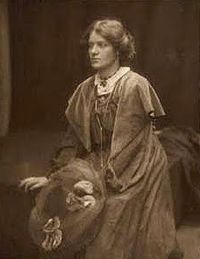 King was educated at the Glasgow School of Art in the 1890s, during it's heyday as a center of Art Nouveau; it was one of the few art institutions that admitted women at that time, and that took their work just as seriously as men's. She then taught at the school, while embarking on a career in book illustration and design. In 1908, she married fellow artist E.A. Taylor, and in 1910, the couple moved to Paris -- where they ran The Shearling Atelier for Fine and Applied Art (as well as a summer school on the Isle of Arran) until the First World War.
King was educated at the Glasgow School of Art in the 1890s, during it's heyday as a center of Art Nouveau; it was one of the few art institutions that admitted women at that time, and that took their work just as seriously as men's. She then taught at the school, while embarking on a career in book illustration and design. In 1908, she married fellow artist E.A. Taylor, and in 1910, the couple moved to Paris -- where they ran The Shearling Atelier for Fine and Applied Art (as well as a summer school on the Isle of Arran) until the First World War.
When the war forced King and Taylor to return home to Scotland, they settled down in the fishing village of Kirkcudbright. I tend to think of Kirkcudbright as the Chagford of its day, for it was home to numerous artists, many influenced by the Art Nouveau moment and (as was common in that movement) who also shared King's interest in myth, folklore, and magic. Both King and her husband viewed art-making as a quasi-magical, deeply spiritual endeavor...and King herself was an ardent believer in fairies. Her art, she said, came from her inner vision of the unseen world that resides within nature.
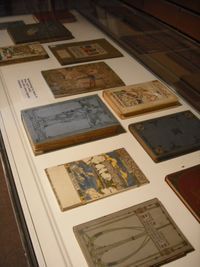 Green Gate Close, where King and Taylor lived, soon became an important centre for women artists, with King (as always) supporting and inspiring many other artists around her, while also producing an astonishing amount of gorgeous work herself. Like William Morris (another hero of mine), she didn't limit herself to one medium but allowed her vision to flow into every corner of her work and her life. She painted, illustrated, wrote, designed jewelry and ceramics, was instrumental in bringing the art of batik to Great Britain; she designed textiles and metal-work and furniture and rooms, both alone and in collaboration with her husband.
Green Gate Close, where King and Taylor lived, soon became an important centre for women artists, with King (as always) supporting and inspiring many other artists around her, while also producing an astonishing amount of gorgeous work herself. Like William Morris (another hero of mine), she didn't limit herself to one medium but allowed her vision to flow into every corner of her work and her life. She painted, illustrated, wrote, designed jewelry and ceramics, was instrumental in bringing the art of batik to Great Britain; she designed textiles and metal-work and furniture and rooms, both alone and in collaboration with her husband.
Had I access to a trust-worthy Time Machine, of all the places and times I would like to travel back to, Kirkcudbright in the 1920s and '30s is high on the list...for although there are many arts circles I find fascinating (the Pre-Raphaelite circle of Morris and Rossetti, for example), it is rare to find one with a strong coterie of women artists at the center. I'd love to have been one of those young women showing up on King's doorstep, a portfolio under my arm....
More information on Jessie King can be found in Jude Burkhauser's excellent book Glasgow Girls: Women in Art & Design 1880 - 1920. There's also a biography by Colin White, The Enchanted World of Jessie M. King, which sounds completely fascinating -- but alas, I can't vouch for it personally as I've not yet found a copy I can afford! King's work can be viewed online on the Art Passions website, and on the Jessie M. King blog. It's also possible to visit King and Taylor's old home in Kirkcudbright, which is now The Greengate B&B.
November 8, 2011
Inspiring Women: Gwen John
I love the Welsh artist Gwen John (1876-1939) both for beautiful, tranquil, masterful paintings, and for her passionate, ferociously independent spirit. Her younger brother, Augustus John, grew up to be the most celebrated English artist of his day, and yet he famously stated: "Fifty years after my death I shall be remembered as Gwen John's brother." Remarkably, time has proved him right.
Gwen studied at the Slade School of Art in London in the waning years of the 19th century, then carved out a bohemian life at the fringes of the art world in Paris (from roughly 1898 to 1910), where she studied with Whistler, modelled for Rodin (who was her also her lover), and was a close friend of Rilke's. Living in a series of spare little rooms, she supported herself by modelling while quietly creating luminous paintings of great technical brilliance, exploring the tonal qualities of color in an almost scientific fashion. Obsessed with Rodin, and focused on her work, she exasperated her family and friends by her eccentric manner of living -- spending money on paints and treats for her cat while living on nuts and fruits herself. On hot summer nights, Gwen liked to sneak into the Luxembourg Gardens and sleep among the trees with her beloved cat, Tiger. (Almost one hundred years later, I loved walking through the same gardens and imagining the young artist there.)
In 1910, Gwen moved to a tumbledown house on the outskirts of Paris, converted to Catholicism, and lived an increasingly reclusive life with her paints and cats, often disappearing into "retraits" in which she would see no one at all, devoting herself to her art. Her usual painting subjects were women, children, cats and corners of the various rooms she lived in -- but always Gwen's true subject was color and light, and the interplay between them.
Last year, Anne Enright published a lovely little piece about Gwen John in The Guardian, writing:
"She painted. She had a little success. She died. I should hate her story but it seems to me exemplary. She made exactly enough space in her life to set her easel down. The push for honesty in her work is amazing; the way she painted the light hitting the side of a brown teapot, or the slope of a mansard roof. I look at her sad, frank-eyed portraits of herself and of other women, and think if that is what the truth looks like, then she was painting a losing game.
"But she did not compromise. She worked with her elbows stuck out, jabbing them both in the eye: on one side her brother Augustus, with his lifestyle and his fame and his sentimental line, and on the other, Auguste [Rodin], the genius, his lecherous old hands coaxing flesh from stone.
"She stood in the middle, looking straight at her subject: Gwen."
I recommend reading Enright's full article ("My hero: Gwen John"), and having a look at Gwen's paintings in the Tate Britain collection. There are two excellent biographies of the artist: Gwen John, A Life by Sue Roe, and Gwen John by Susan Chitty. I also recommend Gwen John and Augustus John from the Tate's exhibition of the two artists' work in 2004/2005. And, for something a little different, The Blue Flower: Poems from the Life and Art of Gwen John by English poet Elizabeth Burns.
The painting at the top of this post is "A Corner of the Artist's Room," referring to an attic room at 87 rue du Cherche-Midi in Paris, where the painter lived between 1907 and 1909. The second painting is "The Convalescent."
November 7, 2011
Inspiring Women: Emily Dickinson and Jeanie Tomanek
Inspiration, for me, comes from so many things: myth, music, memories, dreams, a good walk in the hills with my dog at my side...but also from the work of other women, past and present, who have dared to be artists in one field or another: dared to speak up, to be heard, to be seen, and to take their art, and thus themselves, seriously.
Today I am starting a series of post about some of the woman who've inspire me, starting with two women born in two different centuries: the American poet Emily Dickison (1830 - 1886), and the contemporary American painter & sculptor Jeanie Tomanek.
About her new painting, Letter to the World, Jeanie writes: "Emily Dickinson said her poems were 'my letter to the world that never wrote to me.' She's always been a favorite of mine." You can see more of Jeanie's gorgeous work on her website, and at Everywoman Art; and read about her in "The Heart's Desire" from The Journal of Mythic Arts.
The famously reclusive Dickinson once wrote: "You ask of my companions. Hills, sir, and the sundown, and a dog as large as myself that my father bought me. They are better than human beings, because they know but do not tell."
The hills, sundown, and a canine companion. Potent inspiration indeed.
Inspiring Women
Inspiration, for me, comes from so many things: myth, music, memories, dreams, a good walk in the hills with my dog at my side...but also from the work of other women, past and present, who have dared to be artists in one field or another: dared to speak up, to be heard, to be seen, and to take their art, and thus themselves, seriously.
Today I am starting a series of post about some of the woman who've inspire me, starting with two women born in two different centuries: the American poet Emily Dickison (1830 - 1886), and the contemporary American painter & sculptor Jeanie Tomanek.
About her new painting, Letter to the World, Jeanie writes: "Emily Dickinson said her poems were 'my letter to the world that never wrote to me.' She's always been a favorite of mine." You can see more of Jeanie's gorgeous work on her website, and at Everywoman Art; and read about her in "The Heart's Desire" from The Journal of Mythic Arts.
The famously reclusive Dickinson once wrote: "You ask of my companions. Hills, sir, and the sundown, and a dog as large as myself that my father bought me. They are better than human beings, because they know but do not tell."
The hills, sundown, and a canine companion. Potent inspiration indeed.
Tunes for a Monday Morning
Above, Tracy Chapman is "Talking About a Revolution," back in the days of her youth (and mine) in the 1980s. First released on this brilliant musician's debut album in 1988, the song received heavy radio play in Tunisia this year during the Tunisian Revolution.
Below, here's Chapman twenty years later, still brilliant and still gorgeous, inside and out. The song is "Say Hallelujah" (in honor of last week's Day of the Dead, and all of the people we all have loved who are gone), performed live in 2008. More good tunes: "Telling Stories," "Baby Can I Hold You," and, of course, "Fast Car" (which could have been writen about my mother and never fails to make me cry).
Both of the tunes here go out to Howard and Victoria on this misty morning.
November 4, 2011
Friday's Recommendations:

* The debut issue of The Weird Fiction Review is now online, containing fiction, nonfiction, webcomics, interviews with Kelly Link and Neil Gaiman, and more. Edited by the excellent team of Ann and Jeff VanderMeer, the journal is devoted to "all facets of the weird, from the classics to the next generation of weird writers and international weird." Promising indeed.
* November 2011 is Children's Picture Book Month, and there's a new website up to celebrate this wonderful (and important) art form. All month they'll be posting daily essays by Jane Yolen, David Ezra Stein, Dan Yaccarino, Eric A. Kimmel, and many others.
* Katherine Langerish continues her exploration of mystical voyages in myth, legend, and fantasy at Seven Miles of Steel Thistles.
* Howard and Rex continue to marvel at synchronicity at John Barleycorn.
* Stephanie Piña continues the discussion of Elizabeth Hand's Mortal Love at The Pre-Raphaelite Sisterhood (inviting participation from all interested readers)...while Liz Hand herself discusses Gregory Maguire's Out of Oz (the conclusion to the "Wicked" sequence of books) in The Washington Post.
* Audrey Bilger discusses two new books on Jane Austen (and V.S. Naipaul's now-infamous dismissal of the author) in "Just Like a Woman: on Jane Austen's brand of sentimental education," from The Los Angeles Review of Books.
* The New York Times has an in-depth profile of the brilliantly interstitial Japanese author Haruki Murakami (A Wild Sheep Chase, Kafka on the Shore, The Elephant Vanishes, etc.). About his latest novel, 1Q84, Murakami says, intriguingly: "The Little People came suddenly. I don't know who they are. I don't know what it means. I was a prisoner of the story. I had no choice. They came, and I described it. That is my work."
* Also in the Times: "A Sister's Eulogy for Steve Jobs" is a very moving piece by Jobs' long-lost sister, Mona Simpson. "Love was his supreme virtue, his god of gods," she says. And his last words? "Oh wow, oh wow, oh wow."
* Kenneth Goldsmith discusses plagerism, re-purposing, and patchwriting in a provocative article in The Chronicle of Higher Education (following on from some of Jonathan Lethem's ideas on the subject). "For the past several years," says Goldsmith, "I've taught a class at the University of Pennsylvania called 'Uncreative Writing.' In it, students are penalized for showing any shred of originality and creativity. Instead they are rewarded for plagiarism, identity theft, repurposing papers, patchwriting, sampling, plundering, and stealing. Not surprisingly, they thrive."
* Jeff VanderMeers discusses Nnedi Okafor's World Fantasy Award winning novel Who Fears Death (which I highly recommend), and links to Matthew Cheney's fascinating interview with the author, at Omnivoracious. "I feel very responsible for every story I tell," says Nnedi. "These aren't just tales that I'm throwing out there. There are so many layers of reality, so many layers of 'life'. Stories multiply them. One should NOT take this fact lightly....What makes a story important is located within how it affects me. That also goes for wielding the power of a story. I don't deal with stories that I am detached from. I deal with stories that touch me in some way, that are connected to me. That way when I work with them, that feeling of responsibility is innate, it is assumed. I am writing science fiction, fantasy, magical realist literature based in African culture. If I do African culture wrong, I do wrong to myself. This isn't about accuracy at this point. It is about 'truth'. Two different things."
* Short story recommendation this week: "The Bread We Eat in Dreams" by Catherynne M. Valente, in Apex Magazine.
* Poetry recommendation: "Crone Moon: a poem for Samhain" by Lucy Coates at Scribble City Central.
* Podcast recommendation: Lapham's Quarterly editor Aidan Flax-Clark interviews John Crowley (author of Little, Big and other magical works): Part I and Part II.
* 'Tis the season: There's a gallery of antique vernacular photographs of Halloweens past (from Ossian Brown's book Haunted Air) at BoingBoing, antique Halloween postcards from The New Public Library, a gallery of Ray Villafane's incredible pumpkin carvings at Daily Art Fixx, and skulls (knitted and otherwise) at Midori Snyder's Into the Labyrinth.
* If you're in New York, please don't miss the exhibition of Su Blackwell's extraordinary "paper art" at The Center for Book Arts through Dec. 3. (She's also giving a talk there on November 11th at 6:30 pm.) You'll find more info on the Center for Book Arts website, and can see more of her work on the Su Blackwell site.
* Lester Strong looks at "Shalom Neuman's Art in Exile" (including works inspired by Jewish folklore) in Dissent Magazine. The article co-incides with an exhibition opening in the artist's birth city of Prague.
* Heather and Ivan Morison's "Sleepers Awake," an art installation in the Kentish countryside, is a piece I would very much like to see based on this review in The Telegraph. (May we have more contemporary art like this, please? Beautiful and magical, instead of merely cerebral?)
* I've fallen deeply in love with the paintings of Catherine Hyde (with thanks to another fine painter, Jackie Morris, for the introduction). Working from a studio in Cornwall, Hyde says: "I am constantly attempting to convey the landscape in a state of suspension in order to gain glimpses of its interconnectedness, its history and beauty. Within the images I use the archetypical hare, stag, owl and fish as emblems of wildness, fertility and permanence: their movements and journeys through the paintings act as vehicles that bind the elements and the seasons together."
* Speaking of lovely work: the charming drawing below is by Hussam Elsharif, a talented young artist from Tunis Village, Fayoum Oasis, in Egypt. First of all, have a look at Hussam's blog, Khushushban, where he posts wonderful drawings, carvings-in-progress, photographs and reflections on his life as a mythic artist in a very beautiful and culturally rich part of the world.
Second, have a look at the project for which Hussam created this particular drawing: "A Book Full of Morran" by Swedish illustrator Camilla Engman. Engman has invited fellow-artists to send her pictures featuring Morran, her adorable pup (pictured in the photo below, and in more photos here). The best of these submissions will be published in a book, with the proceeds to go to charity -- and there will also be a website collecting all of the Morran pictures sent in by artists all around the world. You can learn more about the Morran project, and see some of the fabulous pictures, on Engman's Studio Morran blog. Oh, what a great idea this was! (I think Tilly is a little jealous...)
Have a good weekend, everyone.
Terri Windling's Blog
- Terri Windling's profile
- 710 followers








